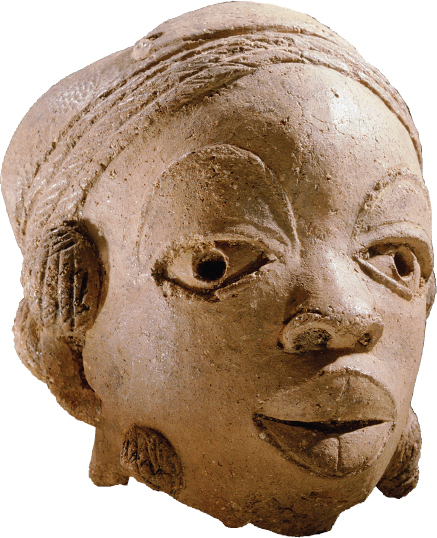Understanding World Societies:
Printed Page 268
> How did Africa’s geography shape its history and contribute to its diverse population?

Hundreds of terra-
FFive main climatic zones roughly divide the African continent. Fertile land with unpredictable rainfall borders parts of the Mediterranean in the north and the southwestern coast of the Cape of Good Hope in the south. Inland from these areas are dry steppes with little plant life. These steppes gradually give way to Africa’s great deserts: the Sahara in the north and the Namib (NAH-
Geography and climate have significantly shaped African economic development. In the eastern African plains, the earliest humans hunted wild animals. The drier steppe regions favored herding. Wetter savanna regions, like the Nile Valley, encouraged grain-
Africa’s peoples are as diverse as the continent’s topography. In North Africa contacts with Asian and European civilizations date back to the ancient Phoenicians, Greeks, and Romans (see Chapters 5 and 6). Groups living on the coast or along trade routes had the greatest degree of contact with outside groups. The Berbers of North Africa, living along the Mediterranean, intermingled with many different peoples — with Muslim Arabs, who first conquered North Africa in the seventh and eighth centuries C.E. (see “Islam’s Spread Beyond Arabia” in Chapter 9); with Spanish Muslims and Jews, many of whom settled in North Africa after their expulsion from Spain in 1492 (see “Spain” in Chapter 15); and with sub-
South of the Sahara, short-
Ancient Egypt, at the crossroads of three continents, was a melting pot of different cultures and peoples. Many diverse peoples contributed to the great achievements of Egyptian culture. Many scholars believe that Africans originating in the sub-
>QUICK REVIEW
Which groups of Africans had the most contact with outside peoples? Why?